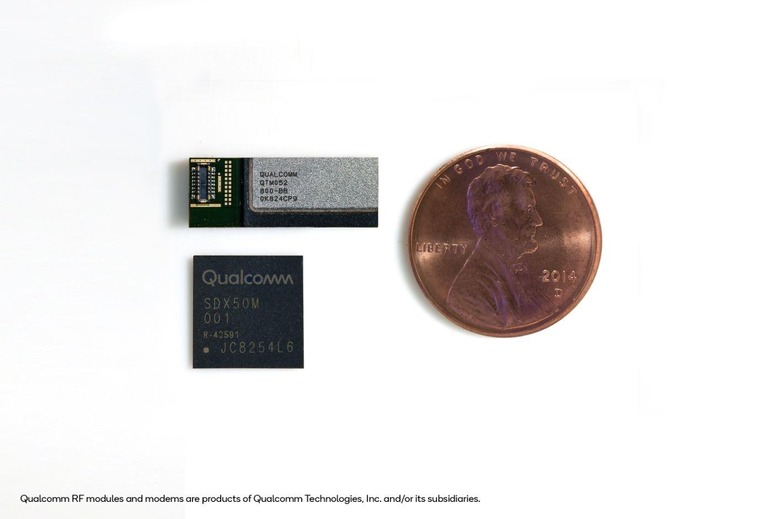Qualcomm's 5G Antennas Just Made A Huge Breakthrough
Today, Qualcomm announced a pretty big breakthrough in the realm of 5G hardware. The company revealed that it has developed a fully-integrated 5G NR millimeter wave (mmWave) antenna module, along with sub-6 GHz RF modules for use in smartphones and other devices. This is an exciting development, because while mmWave offers super high frequency (and, in turn, big increases in speed), there are some roadblocks to implementation.
Specifically, mmWave operates at short range and is easily disrupted, which has traditionally made it a poor connectivity option in smartphones. Qualcomm claims to have found a solution with its new QTM052 family of mmWave antenna modules. Each module is about the side of a penny and fits on your fingertip, and supports technologies like advanced beam forming, beam steering, and beam tracking.
Those technologies can help improve reliability on their own, but the small size of the module could be the true key to success. Qualcomm says that up to four of these modules can be integrated into a smartphone at once, giving each device a grand total of 16 antennas to work with. Qualcomm has designed these to fit in the bezels of a device, and assuming they're placed in different spots throughout the phone, they could significantly cut back on interference through things like hand blocking.

In its announcement today, Qualcomm said that mobile mmWave was once considered "unattainable," but with these new modules, we're now on the path to "large scale commercialization." Both the QTM052 module family and the QPM56xx sub-6 GHz RF module family are made to pair with the Snapdragon X50 modem, which was revealed toward the end of last year.
Qualcomm already has a fairly impressive list of manufacturers planning to implement the X50 in their 5G phones, so it stands to reason that we'll see them use these new radio modules as well. Qualcomm said today that a number of its customers are already sampling the modules, and devices that leverage mmWave 5G NR could be ready for launch as soon as the first half of 2019. It all sounds great on paper, but we'll have to see just how capable these modules really are when the first devices using them launch next year.
